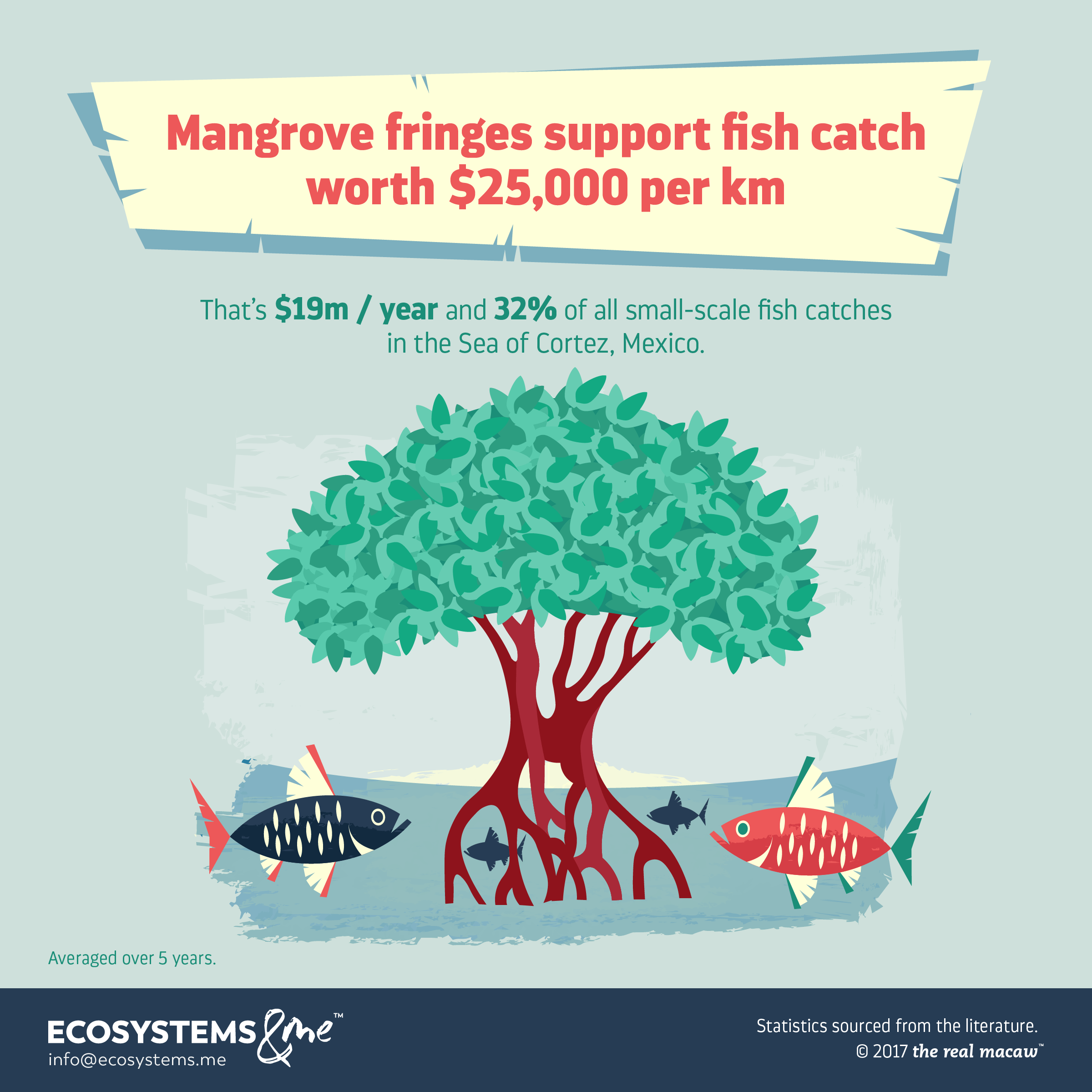
Answer: the mangrove fringe. No, it’s not a bad haircut. A mangrove fringe is actually a thin strip of mangroves on the coast of a land mass. But before we say anything more about fish in the Sea of Cortez, we need to explain what the ‘coast’ is.
The Sea of Cortez (aka: the Gulf of California) separates the Baja California Peninsula from mainland Mexico. Most of the fringes talked about here are on its coasts. But some of them are also on the west coast of the peninsula, on the Pacific Ocean. Sadly, saying ‘Sea of Cortez plus the west coast of the Baja California Peninsula’ is way too much of a mouthful, so we’re just going to go with Sea of Cortez.*
Now that that’s out of the way, if you’ve ever tossed your fishing line out in the Sea of Cortez, you can probably do a roll call of its famous species. There’s snapper, grunts, catfish, sea bass, grouper, blue and striped marlin, sailfish, wahoo, Pacific bluefin tuna, yellowfin tuna… and many more. Actually, there are close to a thousand fish species in the area! Not to mention various marine mammals like humpback and fin whales, reptiles like sea turtles, and yes… some sharks… including both the great white shark and the very gentle whale shark. (Both of which are technically fish.)
Leaving the sharks aside, did you know that one out of every ten of these fish species is only found in the sparkling blue waters of the Sea of Cortez?
What’s more, a whole lot of them rely on mangrove fringes. To find out how exactly, read on below.
Mangrove fringes
‘Mangrove’ can mean different things, depending on context. Most specifically, it’s a small coastal tree that grows in saltwater and wet mud. But generally, it refers to a mangrove forest: the ecosystem created by the trees and their roots, which grow into intricate systems that look a bit like spaghetti. Just like any other forest, it creates habitat for many other plants, plus marine species like oysters, crabs, and shellfish.
Red mangroves are strong, tough, specially adapted to saltwater… and home to fish.
Much of the coastline of the Sea of Cortez has a special, five to ten metre wide strip of red mangroves right at the edge of the water. (Hence: the mangrove fringe!) They are strong, tough, and specially adapted to saltwater thanks to their unique ‘prop’ or ‘stilt’ roots. These can be up to five metres long! Not only do they suspend the tree over the water, giving it extra stability, but they also help it take in more oxygen. And they are habitat for other plants and animals – specially – you guessed it – fish.
How mangroves boost fish catch in the Sea of Cortez
Fish love mangroves . The maze of roots is perfect protection for younglings (also called juveniles) against bigger predators, which could easily hunt down young fish in open, deep water. Fish also often eat worms and other small creatures which feed on decomposed mangrove leaves. So, it shouldn’t be surprising that many species important for the local fishing industry rely on mangroves for nursery habitat.In fact, in 2001-2005, almost a third of small-scale (also known as artisanal fishing) catch was connected to mangroves. That includes blue crab and other saltwater species like catfish. Some of these species are also big for the sportfishing industry, like grey snapper. The ‘burrito grunt’, maybe not so much!
Red mangrove roots are perfect protection for young fish – that are later caught by local fishermen.
Comparing catch amounts with fishing locations shows that catches were higher closer to the mangrove fringe. In other words, catch increased with mangrove area. Based on the price of fish and the increase in catch, every kilometer of fringe supported around $25,000 of fisheries. In total, that was $19 million of income for local fishermen each year, on average , thanks to the mangroves. Pretty good for a bunch of waterlogged trees!
*We were also a bit confused about whether we should call it the Gulf of California. But apparently both names are equally valid.
